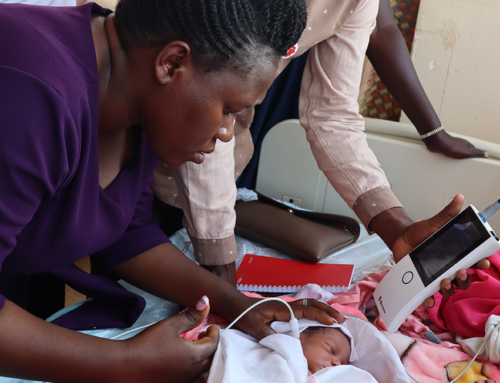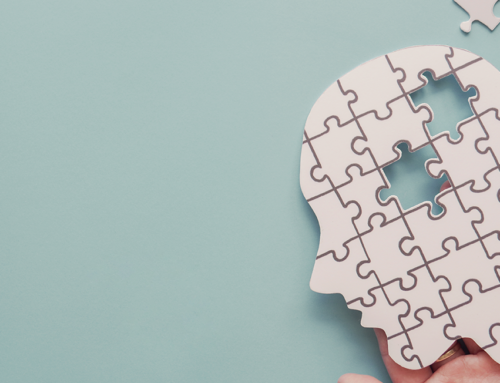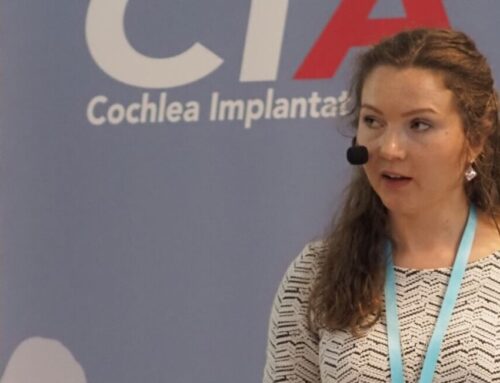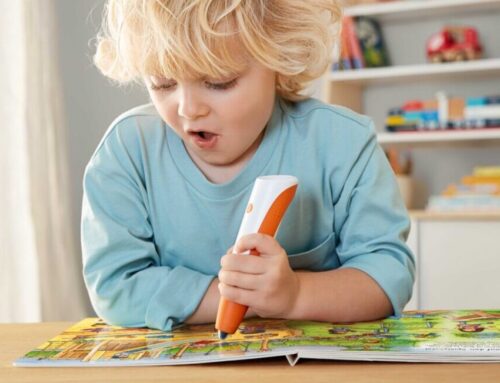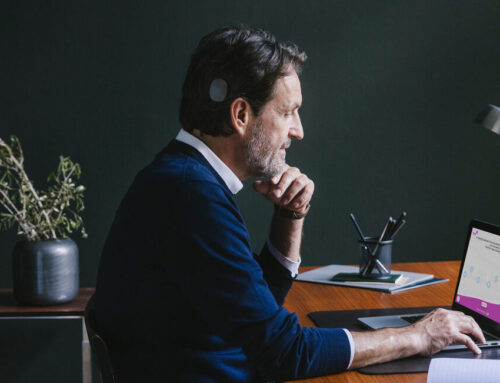Bilateral implants as a standard care for people with hearing loss
Children who are born with a profound hearing loss receive cochlear implants in both ears very early in life. Deafened adults are often more hesitant. Yet even users who received their first cochlear implant years ago may benefit from bilateral implantation.

Nowadays cochlear implants in both ears – bilateral implants – are considered standard of care for patients with profound hearing loss. In the early days of cochlear implantation this was unthinkable. A large number of preoperative tests were required before one ear was implanted. Doctors wanted to make sure that the hearing nerve, a prerequisite for a successful cochlear implantation, was fully functional. And they wanted to find the “better” ear.
If auditory results in both ears were similar, they usually recommended the ear with shorter auditory deprivation; or the ear with more residual hearing. This was a difficult decision for candidates, because implant technologies and surgical techniques of those days usually led to a loss of residual hearing. Theirs was the choice between a hearing prosthesis or clinging to what was left of their hearing. Users unanimously reported what a relief it was for them to hear again and to participate in social life with their families and friends again.
User pioneers
Pharmacist Rolf was one of those early users and very satisfied with his MED-EL Combi 40 cochlear implant. Indeed, he was so satisfied that he wanted one on the other ear as well. In 1998 the ENT clinic eventually fulfilled his wish. In the same year, little Max, four years back then, followed suite, becoming the first child with bilateral cochlear implants. The results in adult bilateral CI users were so convincing that doctors decided to provide bilateral implantats for children as well.
Ever since, many clinics have offered bilateral implantation to newly diagnosed deaf children: this is either done in simultaneous procedures during one surgery, requiring anaesthesia only once, or in sequential implantations with only a short period of six to 18 months in between surgeries.
Planning weekends with CI
Friday afternoon, 3 p.m. An upset mother calls: “Niko cannot hear anymore. And tomorrow is his 7th birthday party, with a clown and all his friends visiting. Please, can we come and see you now?!” At the turn of the century this was not an unusual phone call to get. CI users were usually profoundly deaf in both ears, but most of them only had one implant. Sometimes it was only a twisted pin in the battery pack or an incorrectly adjusted switch on the processor. If users could not solve the problem on their own, they would have had to spend the weekend in silence, had it not been for MED-EL CI engineers who did the quick repairs. Particularly for children such a situation was a mental disaster. But it could be a challenge for adults, too.
Sometimes it even turned into a safety risk. A teacher in an elementary school once complained: “If a deaf child with one implant ran out of batteries, we used to call the parents. We were worried the child might go home hearing nothing on the street.
The benefits of the second side
Rolf was right when he insisted on getting a second implant. It does indeed bring more benefits than just the security of a backup and the guarantee of having the better ear implanted. The most relevant advantages of bilateral implantation are sound localisation and being able to tell whether a sound source is situated on the left or right side of the head.
All other advantages derive from these two benefits, similar to the advantages of binaural hearing in people with two fully functioning ears[1]. This is what the specialists at the Wurzburg University Clinic observed in their first two bilateral CI patients. They published their findings in a scientific study. Speech understanding in background noise improved significantly with bilateral CI use in all study participants. Many more studies on speech understanding and sound localisation followed. Scientists agreed like they had never done before: Bilateral implantation for bilaterally deaf CI user delivers clear advantages.

The most relevant advantage of bilateral implantation is sound localisation – particulary important in dangerous situations.
Bilateral implantation – As early as possible
CI specialists Joachim Müller, Franz Schön and Jan Helms, authors of the first study on bilateral cochlear implantation, concluded that the benefit from a second implant seemed to be independent of the time period between the first and second implantation. However, this is mitigated by what we know about neuronal developmental processes. “Our brain depends on contacts between nerve cells, the so-called synapses”, explains Andrej Kral, neuroscientist at the Medical School Hannover in an interview for the magazine “Schnecke”[2]. The human brain and its synapses are plastic, they can learn. Hearing loss can trigger a learning process and a reorganisation of the brain. This allows an efficient use of the residual hearing.
“Hearing loss has a particularly strong impact in childhood, when the brain is developing”, says Kral. “Most synapses…depend on hearing experience.” Learning to hear as an adult is much more difficult: “It requires a complex neuronal machinery, a complex brain computer. It can only develop when hearing was trained at an early age. You can never replace early hearing experience later, after a critical phase in development is finished. Therefore hearing loss in childhood should be treated as early as possible.”
Kral quotes results of fellow researcher Angelika Illg: She and her team at the German Hearing Centre Hannover found out that children born with bilateral deafness, who received their second implant quite some time later than the first one, showed slower progress with the second implant.
Delayed start – still a success
With reference to this and similar publications, children who had long received their first implant, were not considered for a second one. Despite the findings from the Wurzburg group that demonstrated success even after long intervals between implantations. In his 2013 interview Andrej Kral, who holds a chair for audiological neurosciences in Hannover, pondered that the binaural abilities of a late second implantation might be boosted with speech and language therapy.[3]
Sound localisation was one of the special binaural abilities that was thought to develop only in the first few years of life. In a 2018 study, scientist Catherine Killian looked closer at this ability in bilaterally implanted CI children [4]. For her study, Killian and her colleagues tested more than 100 bilaterally implanted children who had had a delay of up to twelve years in between their first and second implant.
“Inter-implant delay should therefore be minimized for children with bilateral profound hearing loss”, Killian summarized her results, and explained: A longer inter-implant interval … led to poorer accuracy in sound-source localization for children using bilateral cochlear implants. According to the study results, children still benefited from a second CI ten or more years after the first side was implanted.
Technology makes the difference!
In their study the scientists from Bradford and Leeds [5] also emphasized that the success of sound localisation in these children was significantly depending on implant type. MED-EL cochlear implant users were associated with more accurate localization and may catch up up to five years of inter-implant intervals.
[1] Read more: More than the sum of its parts
[2]Research for good hearing, implantable hearing systems – interview with Prof. Dr. Andrej Kral, traken from: Schnecke, edition 82, p. 11f, December 2013
[3]ref: Research for good hearing, implantable hearing systems – interview with Prof. Dr. Andrej Kral, traken from: Schnecke, edition 82, p. 11f, December 2013
[4] Killian C, Scally A, Killian E, Totten C, Raine C, Factors Affecting Sound-Source Localization in Children with Simutaneous or sequential bilateral cochlear implantation. Ear Hear. 5 Doi: 10.1097/AUD.0000000000000666
[5]Killian C, Scally A, Killian E, Totten C, Raine C, Factors Affecting Sound-Source Localization in Children with Simutaneous or sequential bilateral cochlear implantation. Ear Hear, 2018 Oct. 5. Doi: 10.1097/AUD.0000000000000666

